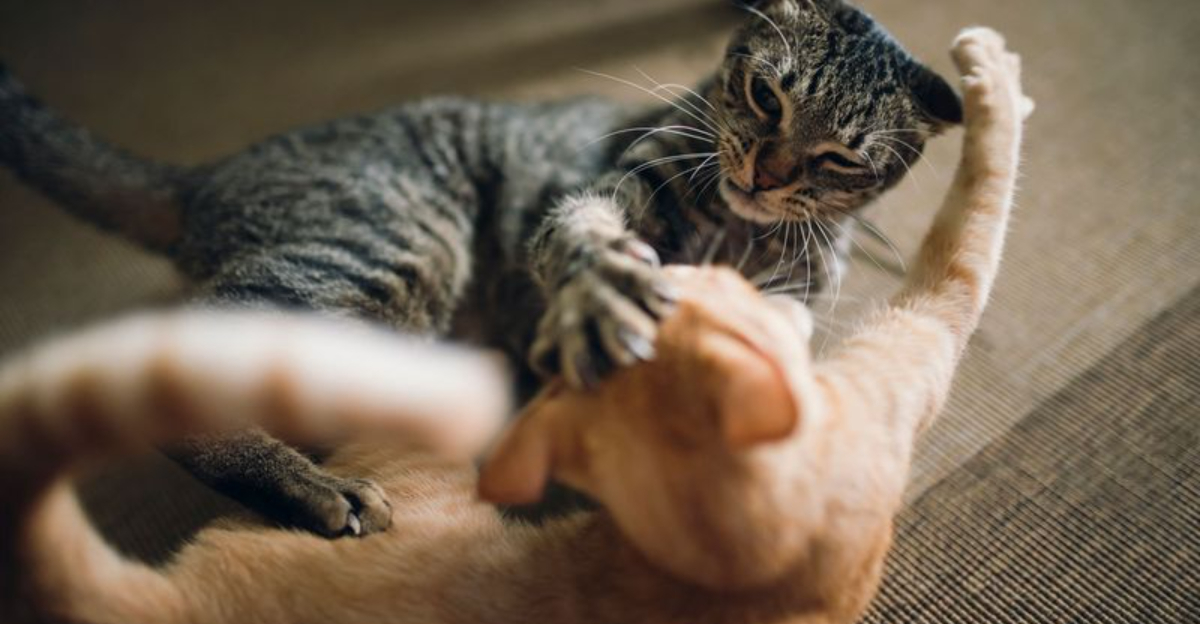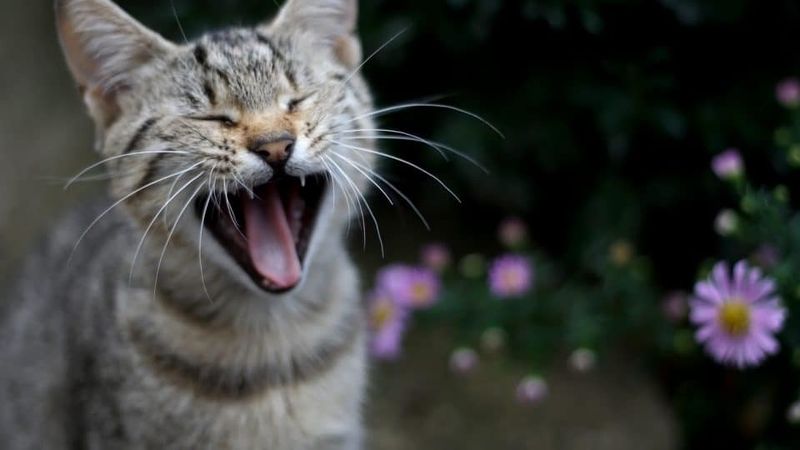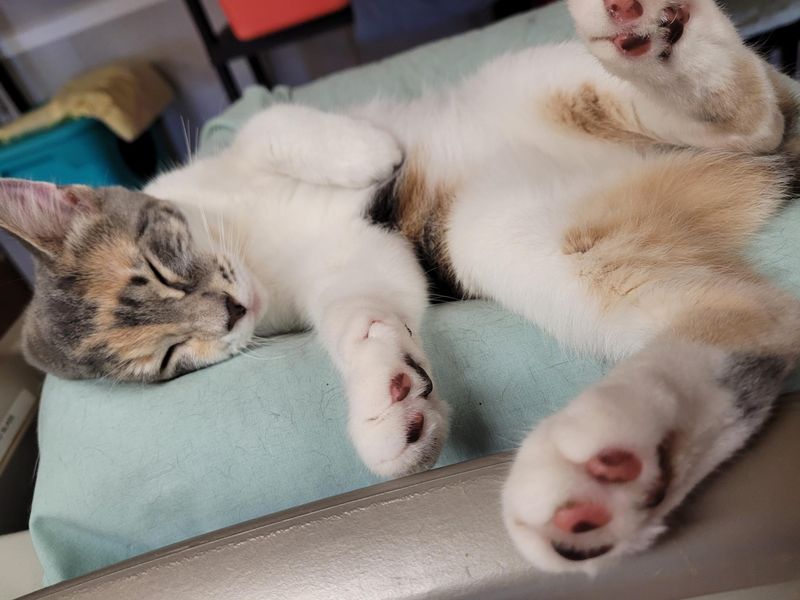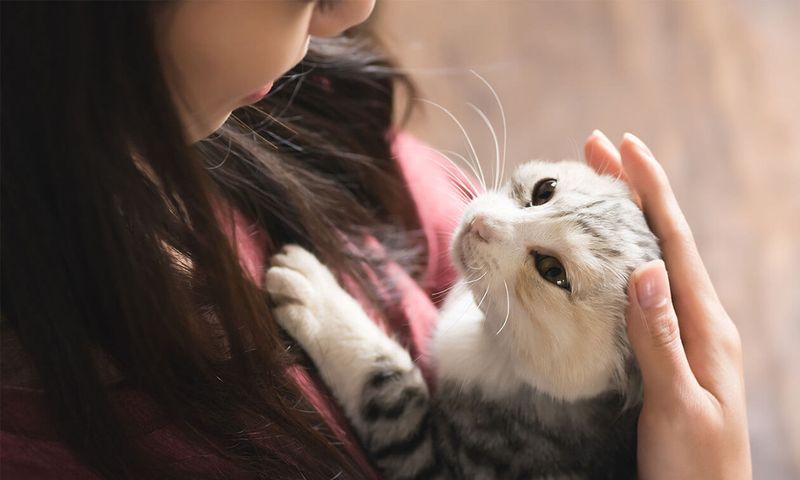📖 Table of Content:
Cats are often misunderstood as low-maintenance pets that simply enjoy lounging around. While they do spend a large portion of their day sleeping, they are also intelligent, curious creatures that thrive on environmental enrichment. Just like dogs, children, or even adults, cats require consistent mental challenges to remain emotionally balanced and behaviorally sound.
In the wild, felines are constantly engaged—stalking prey, defending territory, and navigating complex social interactions. Domesticated life removes many of these natural tasks, and without proper stimulation, your cat may start to exhibit behaviors that seem confusing, frustrating, or even concerning. These behavioral shifts are often subtle cries for more engagement and activity, not signs of a “bad cat.”
By understanding the signs your cat gives when they’re mentally under-stimulated, you can take simple steps to improve their environment and daily routine. From interactive toys to climbing structures and new scents, there’s a lot you can do to keep their minds sharp and happy. Below, we explore eight common behaviors that suggest your feline friend needs a bit more brain play in their life.
1. Destructive Scratching
Destructive scratching isn’t always about sharpening claws or marking territory—it can be a red flag for mental boredom. When a cat lacks engaging activities, it may seek out furniture or curtains as a form of stimulation. Your usual scratching post might no longer suffice if it’s too familiar or not positioned in an appealing spot. Some cats will scratch out of frustration, especially when left alone for long hours without interactive play. You might notice the destruction tends to occur in areas you frequent, which is a sign they’re trying to get your attention. Consider that this behavior might be their only way of physically expressing pent-up energy. Introducing new scratching surfaces, like cardboard pads or vertical posts, in various rooms can be a healthy redirect.
2. Over-Grooming or Licking
Persistent licking and grooming can sometimes signal more than just fastidious cleanliness—it may hint at anxiety or mental stagnation. Over-grooming often emerges in cats that don’t have enough outlets for exploration and stimulation. The repetitive act of grooming can become a form of self-soothing or stress relief in the absence of other engaging activities. You might notice thinning fur or bald patches, typically around the stomach, legs, or base of the tail. Medical issues should be ruled out, of course, but mental boredom is frequently a contributing factor. When the grooming becomes obsessive and your cat seems “stuck” in the habit, it’s time to look at their daily environment. Adding scent trails, puzzle feeders, or playtime with wand toys can break the cycle.
3. Increased Vocalization
Excessive meowing, yowling, or chirping—especially at times when your cat is usually quiet—may indicate they’re seeking more interaction. A mentally under-stimulated cat might vocalize to initiate play or simply out of restlessness. Their “chatter” is often aimed at people, doors, windows, or toys, suggesting a desire for engagement. This vocal effort can increase when you’re home more often, or, ironically, when you’re not home enough. While some breeds are naturally more vocal, a change in vocal habits is always worth noting. It’s not uncommon for cats to use their voice as their main tool of communication when other enrichment is lacking. Listening carefully to when and how your cat meows can help you adjust their routine to include more engaging moments.
4. Aggressive Play or Random Attacks
Sudden pouncing on your ankles, hands, or other pets can be your cat’s way of releasing pent-up energy. These surprise attacks often occur in cats that haven’t had sufficient mental and physical stimulation. Unlike true aggression, this type of behavior typically lacks warning signs like hissing or growling and appears more like exaggerated play. Your cat might be trying to mimic hunting behaviors but has no appropriate outlet for doing so. Without access to interactive toys, their target becomes you. These behaviors can feel jarring, but they’re not malicious—just misdirected instincts. Scheduled, high-energy play sessions with feather wands or motorized toys can drastically reduce this pattern.
5. Pacing or Restlessness
Restlessness can show up in many forms—constant pacing, leaping from surface to surface, or following you from room to room. A mentally bored cat may feel the need to “do something” but not know what. When this occurs, it often appears as though your cat is trying to find a purpose or activity on its own. You may even observe them starting one activity, abandoning it, and moving to another with no satisfaction. The pacing might increase during certain times of day, especially if they’re used to stimulation at those hours. Cats with active minds need tasks that satisfy both their physical agility and curiosity. Try rotating toys, introducing climbing shelves, or even offering simple training sessions to give them a new focus.
6. Sleeping Excessively
Although cats are known to sleep a lot—up to 16 hours a day—excessive or listless sleep can point to boredom. Unlike a well-stimulated cat that naps between bursts of play, a mentally unengaged cat might sleep just to pass the time. You might notice your cat sleeping more during the day and becoming more restless at night, disrupting your schedule. This cycle can be particularly common in indoor cats who lack exposure to a dynamic environment. Instead of active play, their bodies enter “low-power mode” to cope with monotony. While not harmful in the short term, long-term oversleeping can affect their physical and mental health. Reviving their interest with new smells, textures, or playtime can help regulate their natural rhythms.
7. Obsessive Attention-Seeking
Unusual clinginess—like constantly walking across your keyboard, nudging your hands, or interrupting your tasks—might be more than just affection. This behavior often surfaces when a cat has few other ways to occupy its mind and sees you as the sole source of stimulation. At first glance, it may seem sweet or amusing, but it can signal a lack of enriching options. Your cat may follow you from room to room, vocalize, or stare at you until you give in. While companionship is important, a mentally stimulated cat can comfortably entertain itself for stretches of time. Creating independent enrichment opportunities like window perches or food puzzles can provide balance. This not only helps your cat but also gives you the space to focus when needed.
8. Loss of Interest in Toys or Play
A sudden disinterest in toys, games, or social play can actually signal that your cat is under-stimulated. Much like humans, cats can become bored with the same routine and need novelty to stay engaged. If you’ve noticed your cat walking away from toys they once loved, it’s likely they crave a more mentally rewarding challenge. Toys that no longer “move,” “hide,” or “surprise” them might fall flat after a while. This doesn’t mean they’ve outgrown play—it just means the type of play needs to evolve. Changing up play routines, hiding toys around the house, or introducing interactive feeders can reignite their interest. Think of it as upgrading their entertainment library.








